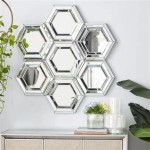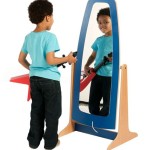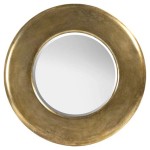Mirror Effect Spray Paint on Plastic
Achieving a mirror-like finish on plastic surfaces using spray paint can be a challenging but rewarding endeavor. This article explores the process, materials, and techniques involved in creating this unique effect.
Key Considerations for Mirror Finish on Plastic
Several factors influence the success of achieving a mirror finish on plastic. Understanding these elements is crucial for a satisfactory outcome.
- Plastic Type: Certain plastics, such as ABS and acrylic, are more suitable for painting than others due to their smooth surface and paint adhesion properties.
- Surface Preparation: Thorough cleaning and sanding are essential for creating a smooth base for paint adhesion.
- Primer Selection: Choosing the correct primer designed for plastic is crucial for ensuring the paint adheres properly and prevents peeling.
- Paint Application Technique: Multiple thin coats, applied evenly, are critical for preventing drips and achieving a smooth, reflective surface.
- Environmental Conditions: Temperature and humidity can significantly impact the drying and curing process, affecting the final finish.
Plastic Surface Preparation
Proper surface preparation is the foundation of a successful mirror finish. Neglecting this step can lead to uneven paint application and poor adhesion.
- Cleaning: The plastic surface must be meticulously cleaned to remove any dust, grease, or oils that could interfere with paint adhesion. Using a degreaser or isopropyl alcohol is recommended.
- Sanding: Light sanding with fine-grit sandpaper (e.g., 400-grit) creates a slightly roughened surface, promoting better paint adhesion. Be careful not to over-sand, as this can damage the plastic.
- Priming: Applying a specialized plastic primer creates a uniform surface and enhances the bond between the plastic and the subsequent paint layers.
Choosing the Right Spray Paint
Selecting the appropriate spray paint is paramount for achieving the desired mirror effect. Not all spray paints are formulated to create a highly reflective finish.
- Mirror-Effect Spray Paint: Specialized spray paints marketed as "chrome" or "mirror effect" are designed to create a highly reflective finish. These paints often contain metallic particles that contribute to the reflective properties.
- Glossy Finish: Even if not specifically labeled as "mirror effect," opting for a high-gloss spray paint will contribute to a more reflective surface.
- Compatibility: Ensure the chosen spray paint is compatible with the type of plastic being painted. Check the manufacturer's instructions for compatibility information.
Spray Paint Application Techniques
The technique employed during spray paint application significantly impacts the final finish. Precision and patience are crucial for achieving a smooth, mirror-like surface.
- Thin Coats: Applying multiple thin coats is preferred over thick coats, which are prone to drips and uneven drying.
- Even Application: Hold the spray can at a consistent distance (typically 10-12 inches) from the plastic surface and move the can in a steady, back-and-forth motion to ensure even coverage.
- Drying Time: Allow adequate drying time between coats, as specified by the paint manufacturer. This prevents the paint from becoming tacky and ensures proper adhesion.
- Overlap: Slightly overlap each pass of the spray paint to avoid leaving any gaps or unpainted areas.
Environmental Considerations and Safety
The environment in which the spray painting is conducted plays a critical role in the drying and curing process. Safety precautions are also essential for protecting both the user and the surrounding area.
- Ventilation: Adequate ventilation is crucial to prevent the buildup of fumes and ensure proper drying. Working in a well-ventilated area or using a respirator is recommended.
- Temperature: Extreme temperatures can affect the paint's drying time and final finish. Ideal temperatures are typically between 65°F and 75°F (18°C and 24°C).
- Humidity: High humidity can interfere with the paint's drying process and may lead to a hazy finish. Lower humidity levels are generally preferred.
- Protective Gear: Wearing appropriate protective gear, such as gloves, safety glasses, and a respirator, is essential to prevent exposure to harmful chemicals.
Finishing Touches and Considerations
After the final coat has dried and cured completely, additional steps can enhance the mirror effect and protect the finish.
- Clear Coat: Applying a clear coat, specifically designed for use with metallic or high-gloss finishes, can further enhance the reflectivity and protect the paint from scratches and UV damage.
- Polishing: In some cases, lightly polishing the cured clear coat with a fine polishing compound can further enhance the mirror-like shine.
- Durability: While achieving a mirror finish on plastic is possible, it is important to note that the durability of the finish may be limited compared to a true mirrored surface. Exposure to harsh chemicals, abrasion, and extreme temperatures can compromise the finish.

Acrylic Dome To Convex Mirror Using Rust Oleum Effect Spray

Mirror Chrome Color Effect Spray Paint For Plastic China Chromium Vacuum Metallized Pigment Made In Com

Oem Odm Chrome Mirror Effect Silver Plastic Paint Private Label Spray China Made In Com

Mirror Effect Spray Paint Technique On Resin

Mirror Effect Spray Paint Rust Oleum

Faux Mercury Glass Ornaments Diy All Things G D

Chrome Paint 1k Mirror Effect Go

Easy Chrome Paint Brush On Spray Mirror Effect

Testing Out A Mirror In Can Spray Paint

Excellent Metallic Mirror Face Decorative Effect 400ml Gold Spray Paint For Car Metal Plastic China Auto Made In Com








